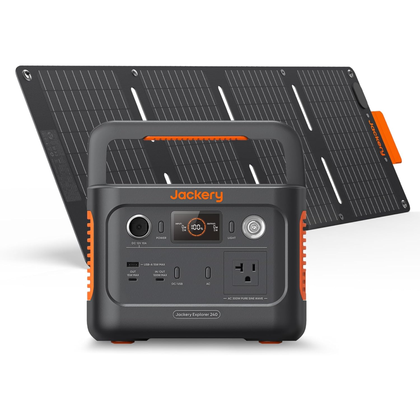Are you getting ready to fly home for the holidays, but want to make sure your phone can stay charged on the trip? Carrying a portable power bank is an easy way to power up without a wall outlet—but how big can you go when flying?
There are a few stipulations to what types of power banks can fly with you, and some even require permission from the airline before you can bring it onboard. Here’s everything you need to know about how big of a power bank you can (and can’t) fly with.
Small to Medium Power Banks Are Always Fine (Under 100Wh)
There’s a very good chance that your power bank is perfectly fine to take on an airplane. Any and all power banks under 100Wh are allowed on all airplanes. If your battery doesn’t say what watt-hour it is, check the mAh (milliamp hour) rating.
If the battery is a standard lithium-ion battery, then you can bring up to a 27,000mAh battery on a plane. Most lithium-ion batteries are 3.7V nominal, which makes a 27,000mAh battery right at 99.9Wh, letting it skirt in right under that 100Wh battery threshold.
In reality, most portable batteries sold are under 27,000mAh because any larger, and you start to get too big to be truly “portable.” Larger batteries definitely do exist, but pocketable batteries typically fall in the 10,000-20,000mAh range.

- Output Power
-
165W Max
- Color
-
Silver or space gray
Never run out of power, whether you’re charging smartphones, tablets, or other USB-enabled devices. Connect up to four at once thanks to dual USB-C Cables, a USB-A port, and a USB-C port.
Medium to Large Power Banks Require Approval (101Wh to 160Wh)
Moving on up, batteries ranging from 101Wh to 160Wh, or 30,000mAh to 43,000mAh, will typically need permission from the airline that you’re flying with before being allowed to bring them on the plane.
These batteries are definitely larger and normally a bit more specialized. Typically, these larger batteries are used with photography and videography gear or other more power-hungry products. However, there definitely are consumer-grade portable batteries that can start to merge into this area.
Typically, the airlines will approve your request to bring these batteries on the flight, but the airlines do have the power to tell you no. If approved, you’re only allowed two batteries of this size per passenger per FAA rules.
So, before you travel with your massive portable battery on a plane, be sure to call the airline for permission first—and don’t bring too many.

- Brand
-
Anker
- Battery Capacity
-
40,000mAh
The Anker 347 Power Bank (PowerCore 40K) is a 40,000mAh portable battery to charge your iPhone, iPad, Android, or even MacBook anywhere you are. With two 30W USB-C outputs, as well as two more USB-A outputs, this battery is capable of charging up to four devices at one time.
Large Power Stations Can’t Fly at All (Over 160Wh)
Once you get over 160Wh, you’re not allowed to bring the battery on a plane at all. These are FAA rules and regulations, and could change at any time (as anything over 100Wh used to not be allowed on flights either).
A battery over 160Wh is definitely starting to move out of the realm of a power bank to a power station, though, and is much harder to travel with. I have a few power stations at my house—one 256Wh and one 1,024Wh—and I couldn’t imagine trying to fly with either of them.
If you want to transport these batteries across the country, they’ll have to be mailed through a ground shipping provider, as USPS doesn’t allow lithium-ion batteries to fly at all in packages. Shipping a battery definitely isn’t convenient, and depending on how far you’re traveling, it could take a long time to get there since it has to be transported via ground. However, shipping is the only way to legally transport a battery over 160Wh if you’re flying.

- Brand
-
Jackery
- Dimensions
-
9.1 x 6.0 x 6.6 inches
- Weight
-
7.94 Ibs
- AC Output ports
-
1
- AC Input rating
-
10A Max
- Solar input rating
-
100W
The Jackery Solar Generator 240 v2 and 40W Mini Solar Panel is the perfect portable power station for those with limited space. The compact design of the Explorer 240 v2 pairs well with the portable 40W solar panel setup. Featuring a 100W USB-C input/output port, an additional 15W USB-C and USB-A ports, and even a 300W 20A AC plug, this power station can handle anything you throw at it.
When it comes to traveling with batteries, there are definitely a lot of rules and regulations to follow. Not only does the FAA and TSA limit the size of batteries you can bring on a plane, but also the method in which you carry them. For example, all lithium-ion batteries must be transported in your carry-on luggage. No rechargeable batteries are allowed in checked luggage, which definitely makes traveling with camera equipment more difficult.



